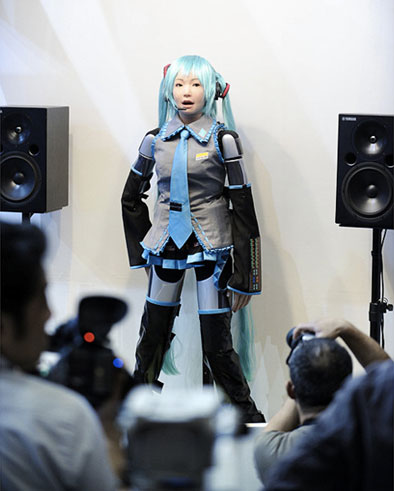It was the summer of 2040. Cross cultural robotics was the hottest discipline on Earth and Mars. Robots had become very much part of the human ecosystem by 2025. They played a variety of roles, ranging from housekeeper, drivers (nah..the driverless cars in the past were not successful, other than with early adopters, because people did not feel confident about being driven with no clear demonstration of who was in control…that gave way to the hugely successful robot drivers !) heavy equipment operators , waiters, soldiers, security guards, gardeners, caregivers, news aggregators, cabin crew, pilots, delivery staff , travel agents, customer service agents, cleaners, etc.

It was, however, since 2035 that Google and Amazon had formed the new genre of corporate political parties that played an international role in the politics of both planets. And THAT is when cross cultural robotics started to become a much sought after discipline.
Robots were an important differentiator between the corporate political parties. Which party had better localized robots to interact with the citizen consumers across the 2 planets made a lot of difference to the outcome of the planetary citizen consumer satisfaction polls.
Cross cultural robotics involved designing robots such that the user experience of the ‘end user’ citizen consumers when interacting with the robots mimicked the exact interaction they would have had with another citizen consumer from their own ecosystem.
User Experience professionals with knowledge of cross cultural design from the ancient ecosystem that existed at the beginning of the 21st century had become celebrities in this shiny new world.
With life expectancy averaging 150 years now, many of the cross cultural UX professionals from the ancient world of ‘wisdom and slow speed’ (as the history chips described that era!) were still very active and amongst the very best!
Cross cultural robotics involved deriving the best algorithms based on brilliant combinations of various cultural dimensions by Hofstede, Trompenaars, Hall, Kluckhohn & Strodtbeck, Bigoness & Blakely , Schwartz’s universal values AND values from the current local ecosystem.
Google’s humanoid robots were considered the most brilliant…it was most often quite impossible to tell them apart from a human being… whichever part of the world they may be in.

A humanoid robot HRP-4C, developed by Japanese institute AIST, is a singer
In order to understand the shifting values in each culture and therefore to constantly update the algorithms embedded in the robots, cross cultural robotics experts had to be very highly skilled in terms of sense making , social intelligence, novel and adaptive thinking, computational thinking and new media literacy in addition to their cross cultural user experience design competency.
Continuous Big data and nano data streams based on data being collected from the networked world of ‘everything’ had to be made sense of, in order to understand what was changing in terms of people’s behavior. The better and faster the understanding, the quicker the updates to the robotic algorithms.
BUT, very recently, something seemed to be afoot. The Cross Cultural robotics groups’ hive mind had decided it was time to embed some compensatory values into the robotic algorithms.
Robots that were part of a highly collective culture needed to now be embedded with rising individuality. Those who behaved in accordance with a high power distance culture and respected hierarchies would now start to speak their mind IF they thought the ‘hierarchy’ was being unjust (whether it was to do with shielding corrupt people, unfair treatment to any specific demographic etc). Masculine cultures would be surprised to find their humanoid robots more balanced in terms of gender roles and expectations.
Whatever was skewed in terms of cultural values in each ecosystem, would be corrected by the humanoid robot population with their new cultural balance algorithms…
At long last , cross cultural experts felt powerful …almost god like. They had never really been recognized in the old world…technology had always ruled…but NOW…everything was going to change.
This was a stealth operation since the group was not sure that either of the corporate political parties would approve of this.
So, they delegated different tasks amongst them selves and decided that August 15th would be the day the new algorithms would be updated.
There was much celebration by the group for this impending change they were going to bring about to the evolution of not just robots BUT also humanity!
Everyone waited with bated breath for D DAY…


